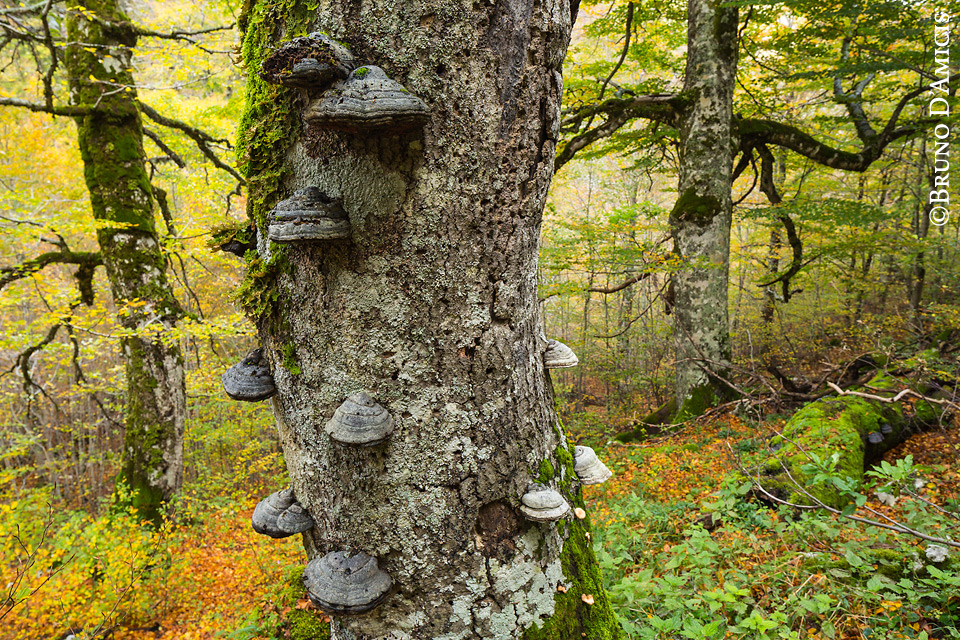Forestbeat #64
Fungo dell’esca / Tinder fungus
© Bruno D’Amicis – www.silva.pictures
Con l’avanzare dell’età la corteccia protettiva del faggio cede lentamente all’avanzata dei funghi: decine di specie cercano di penetrare all’interno del tronco con il proprio micelio per nutrirsi di legno e sostanze nutritive. Tra questi funghi parassiti ce n’è uno molto evidente e diffuso nelle faggete vetuste appenniniche, Fomes fomentarius. esso ha un corpo fruttifero dalla forma che ricorda molto uno zoccolo di cavallo e talvolta decine di questi “cappelli” decorano gli alberi più grandi della foresta. Questo fungo è un serio patogeno del faggio e ne causa la marcescenza del legno. Con il tempo gli alberi infestati da Fomes muoiono e crollano a terra, ma il fungo continua a vivere per lungo tempo, trasformandosi da organismo parassita a decompositore.
Questa specie è nota anche come fungo dell’esca, poiché la sua struttura legnosa e porosa lo rende perfetto per innescare il fuoco insieme alle scintille di una pietra focaia. Questo impiego è noto sin dall’antichità, tanto che sono stati rinvenuti pezzi di Fomes anche in una sacca di Ötzi, il famoso uomo del Similaun, mummia risalente al 3300 a.C.
Per saperne di più sulle faggete vetuste dell’Appennino e questo progetto, www.forestbeat.it
As the beech trees grow older, their protective bark begins to slowly give way to the advance of fungi: dozens of species which try to penetrate inside the trunk with their mycelium to feed on the tree wood and nutrients. Among these parasitic fungi there’s one very obvious and widespread in old-growth forests of the Apennines, Fomes fomentarius. It has a fruiting body shape that resembles a horse’s hoof or a hat and sometimes dozens of these “hats” decorate the largest trees in the forest. This fungus is a serious pathogen of beech and cause its wood to rot. By the time the trees infested with Fomes die and fall to the ground, but the fungus continues to live for a long time, turning from parasitic organism into decomposer.
This species is also known as tinder fungus, because his woody and porous structure makes it perfect for triggering the fire along with sparks from a flint. The use of this fungus is known since ancient times, so much so that parts of it were found in a bags of Ötzi, the famous man of the Similaun, a mummy dating back to 3300 BC.
#parcoabruzzo #forestbeat #faggetevetuste #immaginieavventure
@brunodamicisphoto, @silvapictures, @wildlifeadventures
Date
October 14, 2016
Category
Forest

